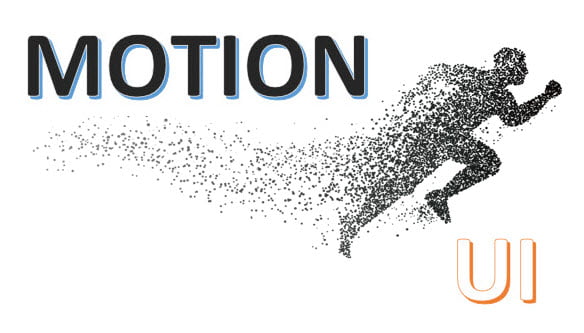Web Development Trends
Web development is the process of building and maintaining websites and web applications. It involves a combination of programming, design, and content creation.
Web development typically involves building a website or web application from scratch or updating and maintaining an existing website or application. This can include designing the website’s layout and user interface, developing the website’s functionality using programming languages like HTML, CSS, and JavaScript, and integrating content management systems, databases, and other third-party tools and services.
Web development can be divided into two main categories: front-end development and back-end development. Front-end development involves building the visual and interactive components of a website that users interact with, such as the layout, navigation, and user interface. Back-end development involves building the behind-the-scenes functionality of a website, such as the database and server-side scripting that powers the website’s features and functionality.
Web development can also involve a variety of specialized skills, such as search engine optimization (SEO), user experience (UX) design, and web security. With the rapid pace of technological advancement, web development is constantly evolving, and developers need to stay up-to-date with the latest trends and best practices to create websites and web applications that are effective, secure, and user-friendly.
Table Of Contents
1. Why Web Development Is Important?
Web development is essential for several reasons:
- Online presence: In today’s digital age, having a strong online presence is essential for businesses and individuals alike. A well-designed and functional website is crucial for establishing an online presence and reaching a wider audience.
- Branding: A website is a powerful tool for building and promoting a brand. It allows businesses to showcase their products and services, establish their brand identity, and communicate their values and mission to their target audience.
- Marketing: A website can also serve as a powerful marketing tool, allowing businesses to reach and engage with their target audience through search engines, social media, and other online channels.
- Sales: A well-designed website can also help businesses increase sales by providing a platform for online sales and transactions, as well as capturing leads and converting them into customers.
- Customer service: A website can also provide a platform for customer service and support, allowing businesses to provide timely and responsive support to their customers.
- Information sharing: A website can be used to share information about products, services, and events, as well as providing valuable resources and educational content to customers and visitors.
We understand that web development is crucial for businesses and individuals who want to establish a strong online presence, build their brand, reach a wider audience, increase sales and revenue, and provide better customer service and support. With the ever-increasing importance of the internet and digital technologies, web development is becoming an increasingly essential skill for individuals and businesses alike.
1. Web Develpment Trends
Web development trends change frequently and rapidly, driven by advancements in technology, user preferences, and market demands. Some of the latest trends are in prevelance for some time now but there are also few that gaining ground as time goes by. Here are some of the latest web development trends:
- JavaScript Frameworks: JavaScript frameworks like React, Angular, and Vue continue to be popular for web development. These frameworks provide developers with the tools to create dynamic and interactive web applications.
- JAMstack: Is a modern web development architecture that stands for JavaScript, APIs, and Markup. It is a methodology for building web applications that focuses on delivering fast and scalable websites and web applications.
- Headless CMS: Headless CMS separates the content management system (CMS) from the presentation layer, allowing developers to create more flexible and scalable web applications. It enables developers to use any front-end framework or technology to build the user interface.
- Cybersecurity: Cybersecurity is becoming increasingly important in web development, with more focus on ensuring the security and privacy of user data. Developers are implementing secure coding practices, using encryption, and following best practices for authentication and authorization to ensure the security of web applications.
- Progressive Web Apps (PWAs): PWAs are web applications that function like native mobile apps. PWAs provide fast and responsive user experiences, offline capabilities, and push notifications. PWAs are becoming increasingly popular with users and web developers.
- Artificial Intelligence and Machine Learning: AI and machine learning are being integrated into web development to improve website performance and provide personalized user experiences. Chatbots, recommendation systems, and voice search are examples of AI-based applications that are becoming increasingly popular in web development.
- Dark Mode: Dark mode is a popular trend that provides a darker color scheme for web applications. Dark mode is easy on the eyes and reduces eye strain, making it popular with users.
- Voice Search and Navigation: Voice search and navigation are becoming increasingly popular with users, and web developers are integrating voice recognition technology into web applications to provide more natural and efficient navigation.
- Motion UI: Motion UI is an animation library that provides smooth and engaging user experiences. It is being used to create dynamic and interactive web applications, particularly for mobile users.
- Virtual Reality (VR): It is a technology that creates a simulated environment or world that users can interact with using specialized hardware and software. It uses computer-generated imagery, audio, and other sensory inputs to create a realistic experience that simulates a physical environment or situation.
Below we shall see thoroughly the above Web Development trends and some of their key benefits and possible considerations.
2.1 JavaScript Frameworks
JavaScript frameworks are pre-written JavaScript code libraries that provide developers with pre-built code and structures for building web applications. These frameworks can help to simplify the development process by providing standardized and reusable code, as well as providing features and functionality that are not available in standard JavaScript.
Here are some popular JavaScript frameworks used in web development:
- React: React is a popular open-source framework developed by Facebook. It is used for building user interfaces and allows developers to create reusable UI components.
- Angular: Angular is a comprehensive framework developed by Google. It is used for building web applications and provides features such as data binding, dependency injection, and component-based architecture.
- Vue.js: Vue.js is a lightweight framework that allows developers to build web applications using declarative templates and reusable components.
- Ember: Ember is a comprehensive framework that provides features such as routing, data management, and templates for building complex web applications.
- Backbone.js: Backbone.js is a lightweight framework that provides a simple, yet powerful way to structure and organize web applications.
- Meteor: Meteor is a full-stack JavaScript framework that provides a complete set of tools for building real-time web applications.
JavaScript frameworks can help developers to build web applications more efficiently and effectively by providing a standardized set of tools and functionality. However, it is important for the latter to choose the right framework for their project, based on factors such as the project’s requirements, the team’s skills, and the framework’s scalability and maintenance requirements.
2.1 JAMstack
JAMstack is a modern web development architecture that stands for “JavaScript, APIs, and Markup”. It is a way of building web applications that emphasizes speed, security, and scalability, by using a decoupled architecture that separates the front-end from the back-end.
In JAMstack, the front-end is built using JavaScript frameworks such as React or Vue.js, and the content is served as static files through a content delivery network (CDN). The back-end is handled by microservices and APIs that provide dynamic functionality such as user authentication, database access, and server-side logic. This decoupled architecture allows for faster load times, better security, and easier scalability.
Some of the benefits of JAMstack include:
- Speed: By serving pre-built static files through a CDN, JAMstack sites can be loaded much faster than traditional websites that rely on server-side rendering.
- Security: With JAMstack, the back-end is separated from the front-end, which makes it harder for attackers to access sensitive data or compromise the system.
- Scalability: JAMstack allows for easy scaling, as the front-end can be served from a CDN and the back-end can be scaled independently using microservices and APIs.
- Lower costs: JAMstack sites require fewer resources to run, which can translate to lower hosting costs and improved site performance.
Some popular JAMstack tools and frameworks include Gatsby, Next.js, Netlify, and AWS Amplify. Overall, JAMstack is becoming an increasingly popular choice for modern web development, as it provides a fast, secure, and scalable architecture that can handle complex web applications.
.3 Headless CMS
A headless CMS (Content Management System) is a type of content management system that provides a back-end-only content management infrastructure, without the front-end rendering capabilities that traditional CMS platforms offer. Headless CMS is often used in combination with a separate front-end framework, which is responsible for rendering the content.
With a headless CMS, content creators can create and manage content in a central location, without worrying about how it will be displayed on the front-end. The content is stored as structured data, which can be accessed via an API by any front-end framework or application.
Some benefits of using a headless CMS include:
- Flexibility: With a headless CMS, developers have more control over the front-end and can choose the framework or technology that best fits the project requirements.
- Scalability: Headless CMS is designed to scale easily, as the front-end and back-end are decoupled, and content can be accessed via APIs by any number of applications or platforms.
- Security: Because headless CMS does not render content on the front-end, it is inherently more secure, as there is less attack surface for hackers to exploit.
- Improved performance: Because the front-end and back-end are separate, headless CMS can provide faster load times and improved performance, as the front-end can be optimized independently.
Some popular headless CMS platforms include Strapi, Contentful, Sanity, and Prismic. Headless CMS is becoming an increasingly popular choice for modern web development, particularly for large and complex projects that require flexibility, scalability, and improved performance.
2.4 Cybersecurity
Cybersecurity is a critical aspect of web development, as web applications are often a prime target for cyber attacks. Web developers must ensure that their applications are secure and protect against common vulnerabilities such as cross-site scripting (XSS), SQL injection, and cross-site request forgery (CSRF).
Here are some important cybersecurity practices for web development:
- Use secure coding practices: Developers should use secure coding practices such as input validation, output encoding, and parameterized queries to prevent common vulnerabilities like XSS and SQL injection.
- Keep software up-to-date: It’s important to keep all software used in web development up-to-date, including operating systems, web servers, databases, and application frameworks.
- Use HTTPS: Always use HTTPS to encrypt data transmitted between the server and client, to protect against eavesdropping and data interception.
- Implement access controls: Implement access controls to ensure that users only have access to the features and data they need to use. This helps prevent unauthorized access to sensitive data.
- Use multi-factor authentication: Multi-factor authentication adds an extra layer of security to web applications, by requiring users to provide additional authentication factors in addition to a password.
- Regularly test and scan for vulnerabilities: Regularly test and scan web applications for vulnerabilities using tools such as vulnerability scanners, penetration testing, and code reviews.
- Train employees on cybersecurity best practices: Train employees on cybersecurity best practices, including how to identify and respond to common cyber threats such as phishing attacks.
By following these cybersecurity best practices, web developers can help ensure that their web applications are secure and protected against cyber attacks.
2.5 Progressive Web Apps (PWAs)
Progressive Web Apps (PWAs) are a modern web development approach that combines the best of both worlds – the functionality and user experience of a native app with the accessibility and ease of use of a web app. PWAs are designed to work on any device and platform, and can be installed on a user’s device, just like a native app.
Here are some key features of PWAs:
- Offline capability: PWAs can work offline or on poor network connections by using service workers, which are scripts that run in the background to cache content and data.
- Fast loading: PWAs use modern web technologies like JavaScript, HTML5, and CSS3 to ensure fast and smooth loading times, even on slow networks.
- Push notifications: PWAs can send push notifications to users, just like native apps, to provide timely updates and alerts.
- Add to Home Screen: Users can add PWAs to their home screen on mobile devices, making them easily accessible, just like native apps.
- App-like user interface: PWAs have an app-like user interface, with a full-screen mode, navigation gestures, and interactive elements, providing a seamless user experience.
Some benefits of PWAs include:
- Improved user engagement: PWAs provide a better user experience than traditional web apps, which can increase user engagement and retention.
- Cost-effective: Developing a PWA can be less expensive than building a native app, as PWAs use web technologies and can work across multiple platforms and devices.
- Better performance: PWAs are designed to be fast and responsive, providing a smooth user experience, even on slow networks.
- Easier maintenance: PWAs are easier to maintain than native apps, as updates can be made directly to the web app, without needing to go through app stores.
Some popular PWA frameworks and tools include React, Angular, and Vue.js. Overall, PWAs are becoming an increasingly popular choice for modern web development, as they provide a cost-effective, fast, and user-friendly alternative to traditional web and native apps.
2.6 Artificial Intelligence and Machine Learning
Artificial Intelligence (AI) and Machine Learning (ML) are becoming increasingly popular in web development, as they provide new ways to improve user experiences and automate tasks.
Here are some examples of how AI and ML can be used in web development:
- Personalization: AI and ML can be used to personalize content and recommendations for individual users based on their past behavior and preferences.
- Chatbots: Chatbots powered by AI and ML can provide instant support and assistance to users, helping them to find the information they need quickly and easily.
- Voice assistants: Voice assistants like Siri, Alexa, and Google Assistant use natural language processing and machine learning to understand and respond to user requests.
- Predictive analytics: AI and ML can be used to analyze large data sets and make predictions about future trends and behavior.
- Image and speech recognition: AI and ML can be used for image and speech recognition, enabling users to interact with web applications using voice commands or visual search.
Some popular AI and ML frameworks and tools used in web development include TensorFlow, PyTorch, and Keras.
Overall, AI and ML provide exciting new opportunities for web developers to improve user experiences, automate tasks, and provide more personalized and intuitive web applications. As these technologies continue to evolve, we can expect to see even more innovation and growth in the field of web development.
2.7 Dark Mode
Dark mode is a popular design trend in web development that has gained a lot of traction in recent years. Dark mode refers to the use of dark backgrounds and light text instead of the traditional light background and dark text. Here are some benefits and considerations for implementing dark mode in web development:
Benefits:
- Reduced eye strain: Dark mode reduces eye strain and makes it easier for users to read content in low light environments.
- Improved readability: Dark mode can improve readability for users with visual impairments, as well as those with sensitivity to bright light.
- Enhanced design: Dark mode can provide a sleek and modern design aesthetic, and can help websites stand out from the crowd.
- Battery savings: For devices with OLED or AMOLED screens, dark mode can reduce battery consumption as fewer pixels need to be lit.
Considerations:
- Accessibility: Dark mode can be problematic for users with certain visual impairments or color blindness, as some users may have difficulty distinguishing between dark colors.
- Content legibility: Some types of content may be more difficult to read in dark mode, such as content with low contrast or small font sizes.
- Design consistency: Dark mode may not be consistent with the brand’s existing design language, and may require additional design work to ensure that it matches the rest of the website.
- Implementation complexity: Implementing dark mode can be complex, especially for larger websites or applications, and may require additional development work.
Overall, dark mode is a popular design trend that can improve the user experience for many users, especially in low light environments. However, it is important to carefully consider the design and accessibility implications of implementing dark mode, and to ensure that it is implemented in a way that is consistent with the brand’s overall design language.
2.8 Voice Search and Navigation
Voice search and navigation are becoming increasingly popular in web development, as they provide a more natural and intuitive way for users to interact with websites and applications. Here are some benefits and considerations for implementing voice search and navigation in web development:
Benefits:
- Improved user experience: Voice search and navigation can provide a more natural and intuitive way for users to interact with websites and applications, reducing the need for users to type in queries or navigate through menus.
- Accessibility: Voice search and navigation can improve accessibility for users with visual or physical impairments, as well as those with limited mobility or dexterity.
- Faster navigation: Voice search and navigation can be faster than traditional navigation methods, as users can simply speak their queries instead of typing them in or clicking through menus.
- Personalization: Voice search and navigation can provide a more personalized experience for users, as they can use natural language to search for content or perform actions.
Considerations:
- Accuracy: Voice search and navigation may not always be accurate, especially in noisy or crowded environments or for users with strong accents or speech impediments.
- Integration: Voice search and navigation may require additional integration work, and may not be compatible with all websites or applications.
- Privacy: Voice search and navigation may raise privacy concerns, as users may be uncomfortable with their voice data being collected and analyzed by third parties.
- Design considerations: Voice search and navigation may require additional design work to ensure that it is consistent with the brand’s existing design language, and may require additional considerations for content organization and information architecture.
Overall, voice search and navigation can provide significant benefits for web development, improving the user experience and accessibility of websites and applications. However, it is important to carefully consider the accuracy, integration, privacy, and design implications of implementing voice search and navigation, and to ensure that it is implemented in a way that is consistent with the brand’s overall design language and user experience goals.
2.9 Motion UI
Motion UI is a design trend in web development that involves the use of animation and other visual effects to create a more engaging and dynamic user experience. Here are some benefits and considerations for implementing Motion UI in web development:
Benefits:
- Improved user engagement: Motion UI can capture the user’s attention and create a more engaging and interactive user experience, improving user engagement and reducing bounce rates.
- Enhanced storytelling: Motion UI can be used to tell a story or convey information in a more dynamic and compelling way, helping to communicate key messages and increase user retention.
- Improved usability: Motion UI can be used to provide visual feedback on user actions, making it easier for users to navigate and interact with websites and applications.
- Improved branding: Motion UI can be used to reinforce brand identity and create a more consistent and memorable user experience across different devices and platforms.
Considerations:
- Performance: Motion UI can be resource-intensive and may slow down the performance of websites and applications, especially on older or less powerful devices.
- Accessibility: Motion UI may not be accessible for users with certain types of visual or cognitive impairments, and may require additional considerations for accessibility and usability.
- Design consistency: Motion UI may not be consistent with the brand’s existing design language, and may require additional design work to ensure that it matches the rest of the website or application.
- Implementation complexity: Implementing Motion UI can be complex, and may require additional development work to ensure that it is integrated smoothly with the rest of the website or application.
Alltogether, Motion UI can be a powerful tool for creating a more engaging and dynamic user experience in web development. However, it is important to carefully consider the performance, accessibility, design consistency, and implementation implications of implementing Motion UI, and to ensure that it is used in a way that is consistent with the brand’s overall design language and user experience goals.
2.10 Virtual Reality (VR)
Virtual Reality (VR) is a technology that creates a simulated environment or world that users can interact with using specialized hardware and software. It uses computer-generated imagery, audio, and other sensory inputs to create a realistic experience that simulates a physical environment or situation.
VR technology typically involves wearing a VR headset, which covers the user’s eyes and ears and displays 3D images and audio that respond to the user’s movements and actions. The user can interact with the VR environment using hand-held controllers, motion sensors, and other input devices.
VR has a wide range of applications, including gaming, entertainment, education, and training. In gaming, VR can provide an immersive and interactive experience that enhances the player’s sense of presence and engagement. In education, VR can be used to provide immersive simulations and virtual field trips that enhance learning and understanding. In training, VR can be used to simulate dangerous or complex situations that would be difficult or expensive to recreate in real life.
One of the main challenges of VR technology is creating a seamless and realistic experience that doesn’t cause motion sickness or other negative side effects. VR developers are constantly working to improve the technology and create more advanced and realistic experiences that can be enjoyed by a wider audience.
Here are some benefits and considerations for implementing VR in web development:
Benefits:
- Improved user engagement: VR can create a more immersive and interactive user experience, increasing user engagement and reducing bounce rates.
- Enhanced storytelling: VR can be used to tell a story or convey information in a more immersive and compelling way, helping to communicate key messages and increase user retention.
- Improved usability: VR can be used to provide visual feedback on user actions, making it easier for users to navigate and interact with websites and applications.
- Competitive advantage: Implementing VR can provide a competitive advantage by differentiating a website or application from competitors, and creating a more memorable and engaging user experience.
Considerations:
- Performance: VR can be resource-intensive and may require powerful hardware to run smoothly, which can limit accessibility and increase development costs.
- Design considerations: Implementing VR requires additional design considerations, including the need to create 3D models and textures, as well as ensuring that the user interface is intuitive and easy to use.
- Integration complexity: Implementing VR can be complex, and may require additional development work to ensure that it is integrated smoothly with the rest of the website or application.
- Limited adoption: VR is still a relatively new technology, and adoption rates may be limited, especially among users who do not have access to VR hardware or who are not familiar with the technology.
Overall, VR can be a powerful tool for creating a more immersive and engaging user experience in web development. However, it is important to carefully consider the performance, design, integration, and adoption implications of implementing VR, and to ensure that it is used in a way that is consistent with the brand’s overall design language and user experience goals.
3. Wrapping up
In conclusion, web development is an ever-evolving field that is constantly adopting new trends and technologies to improve the user experience and meet the needs of modern users. Web development trends are shifting towards more dynamic, interactive, and personalized user experiences.
These trends are driven by a growing need for businesses to differentiate themselves from competitors, engage users in new and innovative ways, and adapt to changing user behaviors and preferences. While some trends may come and go, it is clear that the overall direction of web development is towards greater interactivity, personalization, and user engagement.
As a web developer, staying up-to-date with the latest trends and technologies is essential to remain competitive in the industry and provide the best possible user experience for clients and users. By embracing new trends and technologies, web developers can create more dynamic and engaging websites and applications that meet the needs and expectations of modern users.












